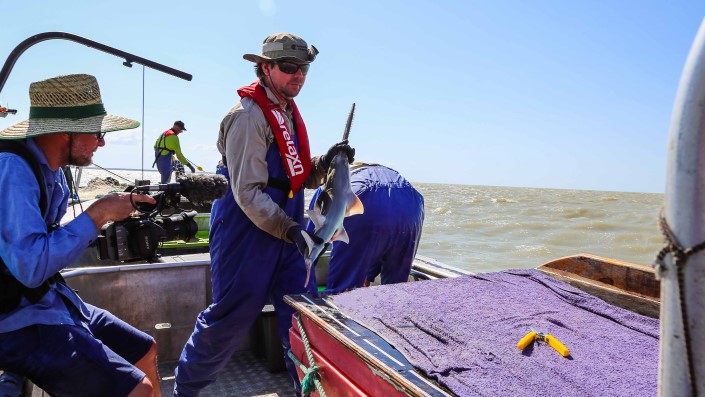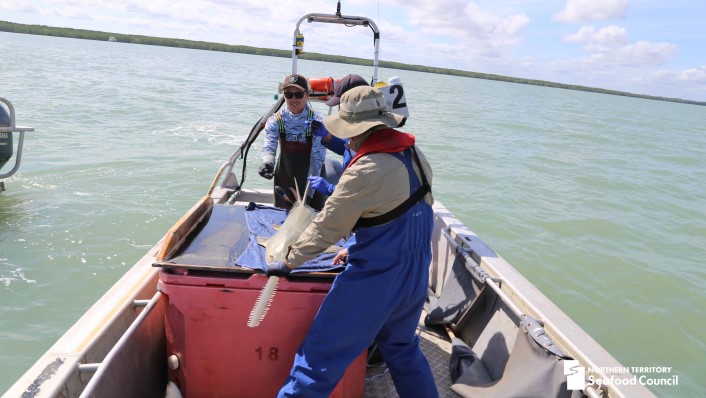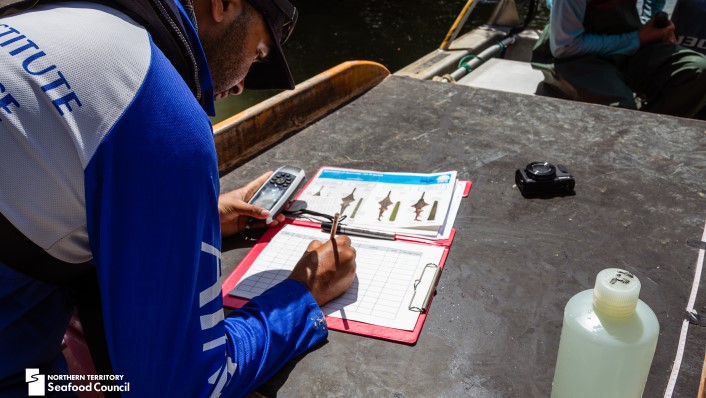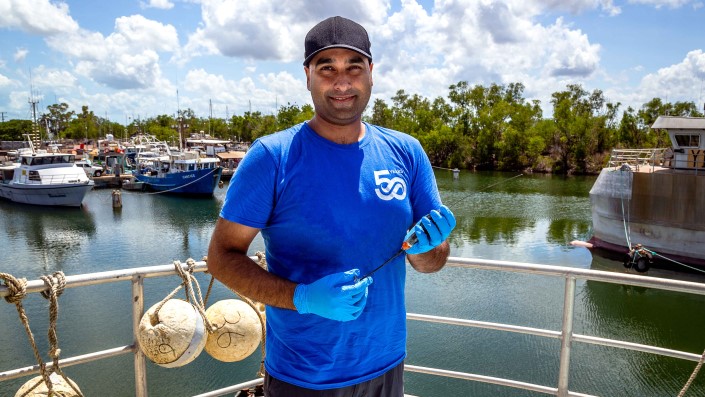AIMS scientists have been in Northern Territory waters looking for endangered sawfish species alongside the experienced professional fishing crew from the FV North Islander.
The search bore fruit with the team encountering a large number of narrow sawfish (Anoxypristis cuspidata) in Buckingham and Arnhem Bays, off the northern coast of Arhem Land, areas which have never been surveyed for sawfish before.
The team collected genetic samples from 34 juvenile narrow sawfish in eight days of fishing, and safely captured two adult female narrow sawfishes (including the one in this image) that were large enough to tag. AIMS scientist Dr Vinay Udyawer and technical officer Simon Harries successfully placed satellite tags, measured and collected genetic samples for DNA analysis before releasing them.

Data collected from the tags will help our scientists understand the offshore movement patterns of sawfish and inform management decisions to conserve the species. The genetic samples may be able to tell researchers how connected the populations are between the two Bays, and more broadly across other populations across the NT.

Dr Udyawer said the large number of juveniles in Buckingham and Arnhem Bays mean these areas could be important nurseries for narrow sawfish, which are listed globally by IUCN as critically endangered.
"We were hoping to tag the lesser known green and largetooth sawfish species, however having two tags on two adult narrow sawfish that are both over 2 metres in length will provide us with invaluable data of their movements,' said Dr Udyawer.

"We hope to get a better understanding of the different species that may inhabit both these bays so we collected a series of water samples which we will now analyse for DNA.
"Importantly we are now taking stock of what we learnt to plan for a second field trip, early next year to deploy more tags."

The trip was made possible by a partnership between AIMS, the Northern Territory Seafood Council (NTSC) and the Research Institute for the Environment and Livelihoods, Charles Darwin University (CDU).
The project is supported with Our Marine Park grant funding from the Australian Government.






